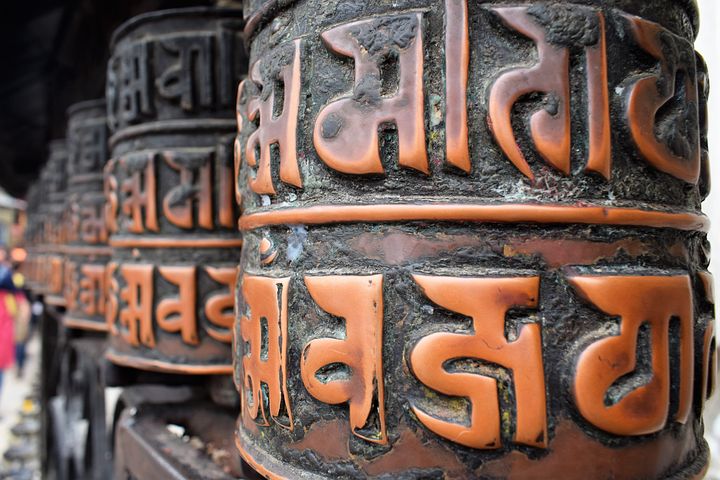“Om Mani Padme Hum” is one of the most well-known and beloved Buddhist mantras. This mantra is used as a tool for both devotion and meditation, and it can be chanted aloud or recited silently. But what does this mantra actually mean? Let’s take a closer look.
Mantras
Mantras are powerful tools that can help to focus the mind and connect us with our highest selves. The word ‘mantra’ comes from the Sanskrit root man-, which means ‘to think.’ A mantra, then, is a sacred word or phrase that is used as a tool to focus the mind during meditation.

Mantra for Chenrezig or Avalokiteshvara
“Om Mani Padme Hum” invokes the Avalokiteshvara (also known as Chenrezig in Tibetan Buddhism), the bodhisattva of compassion. Chenrezig is believed to be a manifestation of all the compassion of all the Buddhas, and by chanting his name we connect with this infinite compassion. It is said to be the most essential mantra in Tibetan Buddhism. The meaning of the mantra is “praise to the jewel in the lotus,” or “hail to the jeweled lotus.” The lotus symbolizes purity and spiritual awakening, while the jewel represents the divine nature of the Buddha. Combined, they represent the path to enlightenment. This mantra is used for purification and to develop compassion.

The six syllables of this mantra represent the stages of Chenrezig’s path from self-centeredness to full Buddhahood:
Om – represents Chenrezig’s holy body, speech, and mind
Ma – represents Chenrezig’s perfect qualities
Ni – represents Chenrezig’s great compassion
Pad – represents Chenrezig’s purifying actions
Me – represents Chenrezig’s wisdom realizing emptiness
Hum – represents Chenrezig’s indestructible nature

The Deeper Meaning of Om Mani Padme Hum
While “Om Mani Padme Hum” is often chanted during meditation or prayer, its meaning goes much deeper than that. This mantra is a reminder that we are all connected, both to each other and to the divine. We are all striving for the same goal of peace and happiness. The next time you find yourself feeling lost or alone, remember these words. Chant them with intention and let their power wash over you.

How to Use the Mantra
The best way to use this mantra is by repeating it 108 times. You can do this by chanting it, writing it down, or even saying it in your head. The number 108 has profound spiritual significance in both Hinduism and Buddhism. In Hinduism, there are 108 sacred names of God, and in Buddhism, there are 108 earthly desires. Chanting this mantra can help you to let go of your desires and focus on your connection with the divine.
There are many ways to incorporate “Om Mani Padme Hum” into your life. One of the simplest is to chant it whenever you need a mental break or a reminder of your connection to the universe. You can also use it as a focal point during meditation. If you’re feeling particularly stressed or anxious, try chanting it before bedtime or when you wake up in the morning. As you become more familiar with the mantra, you may even want to incorporate it into your daily practice.

Benefits of Chanting Om Mani Padme Hum
According to Buddhist teachings, all the teachings of Buddha are contained in this one mantra. By chanting this mantra, you will receive all the benefits of the teachings. This includes developing more compassion, purifying your karma, and increasing your wisdom and abundance.
This mantra is a powerful tool that can help us to focus our minds and connect with our highest selves. If you are looking for a mantra to help you develop compassion and purify your karma, look no further than “Om Mani Padme Hum.” This beautiful Buddhist mantra has many benefits and can be chanted 108 times for added power. Give it a try today.


great article!